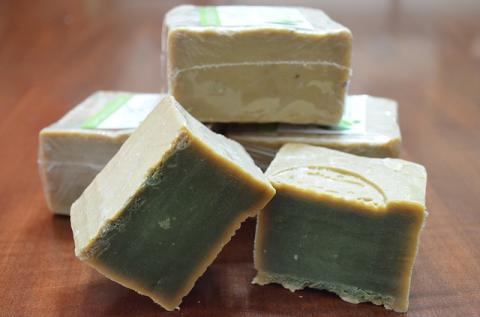
Soap is incredibly amazing and useful. There are many ways to make your own homemade soaps and shampoos, but do you know there are plants out there that do most of the work for you? Some people prefer to make or buy lye to make their soaps, but working with lye in its pure form can be dangerous if not handled properly.
But, fear not: I am not simply referring to the flowers out there that add scents to the soaps. Instead, I am talking about raw fresh soap straight out of nature. In this article, I will teach you about a few plants that can be used to scrub up with.
Each of these plants is used as cleaning agents because of the Saponin present. Saponin is what produces the lathering foam in the soap we use. The Saponins combined with the plant's makeup also produce antimicrobial and antibacterial properties. Amole specifically contains Anti-fungal properties which make it awesome for dandruff shampoo.
The Buffalo Gourd (Cucurbita foetidissima)
Also known as the coyote melon, this plant grows in Southwest United States in the desert regions. All you have to do is take a pinch off of the young growing tips that are tender, take them to the water, and wash your hands. As you wash your hands you will notice a green foam lathering up: it is really beautiful. This soap is great for laundry.
Amole (Chlorogalum pomeridianum)
Amole is a member of the Lily family. You will have to do a little digging with this plant, since it’s the roots you’re after. Clean off the dirt and peel the section of root you want to use to wash with. Slice off a sliver of the root and get to washing.
Yucca (Various Species)
Almost all of the Yucca plants can be used as soap, some are just more effective than others. The root of the Yucca plant contains Saponin, a compound that contains detergent properties. As long as the ground isn’t frozen, you can dig up the roots to make soap. Since the roots are usually quite large, you will either be making a lot of soap or you can freeze or dry some for later use! The yucca requires a little more work than the other two plants mentioned.
First, clean the dirt and debris from the root and then peel the thick skin off. Keep the root as clean as possible. Cut the root into chunks and then mash well – this releases all the soap-making magic. The more you crush and blend the roots, the more it will become an amber color – that’s how you know it’s ready. Bottle the liquid, add your favorite essential oils, and you have shampoo and body wash.
Soaproot (Chenopodium californicum)
These roots can be dug up, peeled, sliced, and used fresh as hand soap. Soaproot contains some antimicrobial and anti-inflammatory properties.
Mountain Lilac (Ceanothus Species)
These beautiful blue and purple flowers are mildly fragrant and the blossoms can be used for soap. Just grab some of the flower blossoms and rub between your hands in water until you get a nice lather. The mountain lilac is more for just cleaning off the dirt and making you smell nice.
Natural soap is preferable for a number of reasons: it’s environmentally responsible, and the process is much less dangerous. As I mentioned Lye is also something people use to make soaps. The process takes some time and patience, but can be dangerous if not handled properly; lye is liquid metal hydroxide. To make lye you use hardwood ashes and leech them in a wooden barrel, which produces raw lye in its pure form. The lye can burn your skin and burn holes in cloth, so be careful when using it. When making lye you can make Sodium Hydroxide (which is used for solid bar soap) and Potassium Hydroxide (which is used for liquid soap).
There is a world full of amazing plants out there to be used for so many things. Plants sustain our lives by providing food and nutrients, healing our bodies when they are sick, and cleansing our bodies in more ways than one. It’s nice to know you can grow a garden and plant literally everything you need to survive and sustain yourself. If you can find these plants or grow them, then that’s one less product you have to purchase from the store. While you’re out there planting some soap root, go ahead and plant some loofa gourds -- they make perfect natural sponges.
If you do indeed plan to venture out into the wild trying to find some soap, keep in mind that everyone’s body is different – some plants can cause irritation to some while having no effects on others. In order to be sure the plant is good for you try using just a little bit on a small section of your skin. Give it about 5-10 minutes and if there is no irritation, wash away.








